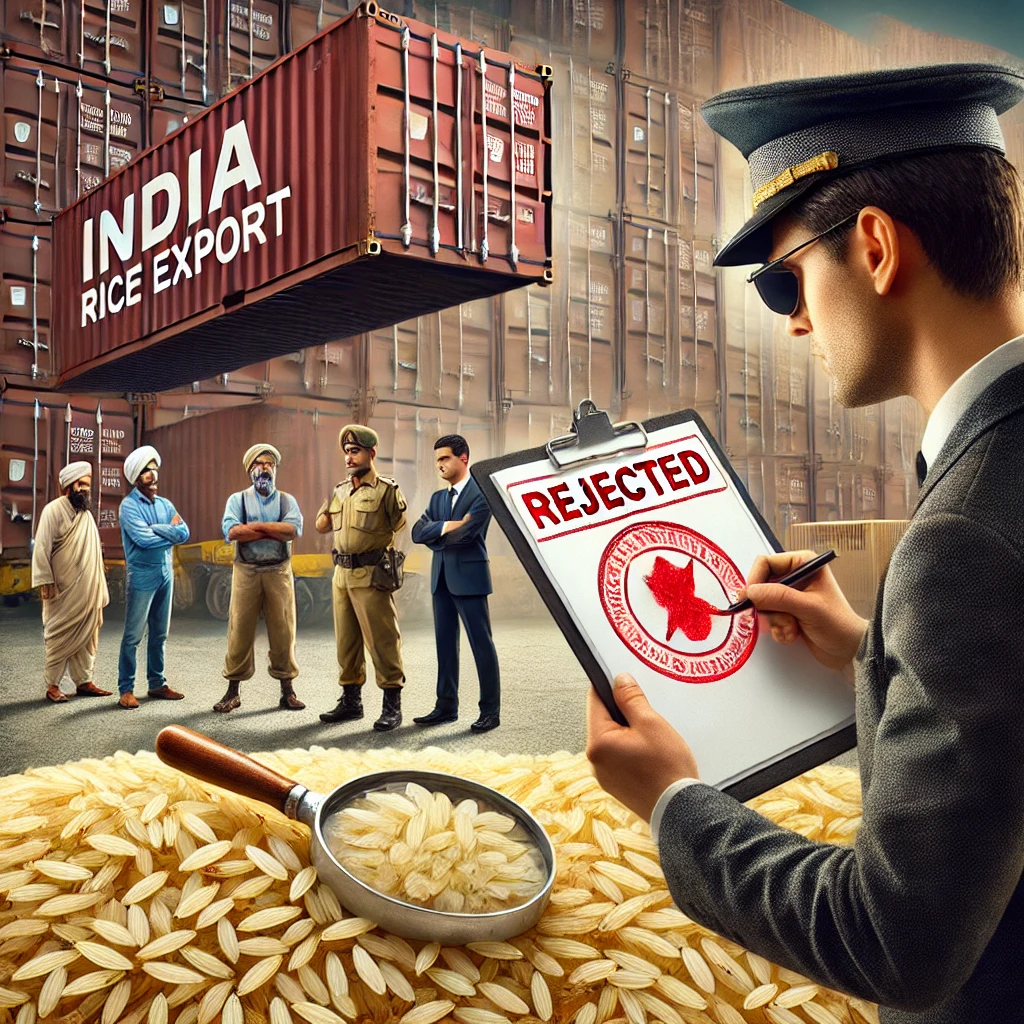
The rejection of Indian non-basmati rice shipments to the European Union (excluding the UK) due to pesticide residue concerns has seen a sharp rise from 3 cases in 2020 to 37 in 2024. In contrast, Pakistan’s non-basmati rice rejections have significantly declined from 54 in 2020 to just 2 in 2024, highlighting a growing challenge for Indian exporters.
The Growing Concern
Trade sources have flagged this as a serious issue, particularly given recent government assurances to Parliament that no consignments were rejected due to aflatoxin contamination from Andhra Pradesh and Tamil Nadu. The rise in rejection cases has prompted calls for deeper analysis and corrective measures.
Data from the Agricultural and Processed Food Products Export Development Authority (Apeda) reveals that India exported 47,888 tonnes of non-basmati rice worth $29.7 million to EU countries between April and December of the current fiscal year. This is a drop from 65,770 tonnes worth $38.23 million in the 2023-24 fiscal year, and 66,236 tonnes in 2020-21.
Pakistan’s Aggressive Push
Despite having relatively low non-basmati exports to the EU, Pakistan has been expanding its presence in the global rice market, reaching 5.25 million tonnes in 2023-24 from 3.12 million tonnes in 2022-23. Major buyers include Indonesia, Malaysia, Afghanistan, Kenya, Senegal, and the Philippines. In Europe (outside the EU), the UK imported around 0.1 million tonnes, while Italy and Belgium imported over 60,000 and 56,000 tonnes, respectively.
With India reopening its non-basmati rice exports after a temporary ban, Pakistan is aggressively working to retain the market share it gained during India’s absence. Compliance with strict Maximum Residue Limits (MRLs) is becoming a crucial factor in sustaining exports.
India’s Inspection Measures and Compliance Issues
Since 2018, India’s Directorate-General of Foreign Trade (DGFT) has mandated a "Certificate of Inspection" for all basmati and non-basmati rice exports to the EU. Under this system, the Export Inspection Council (EIC) and Export Inspection Agencies (EIA) certify that consignments comply with MRL requirements for various pesticides.
However, trade sources suggest that Indian shipments may be allowed entry into the EU without this certificate in some cases, either due to a lack of awareness among customs officials or doubts regarding the credibility of issuing authorities. These lapses could be contributing to the increased rejection rates.
Aflatoxin Concerns and Stringent EU Regulations
On March 11, the Indian government acknowledged in Parliament that a few cases of aflatoxin detection had been reported under the EU's Rapid Alert System for Food and Feed (RASFF). While no non-basmati rice consignments were flagged for aflatoxin in 2020 and 2021, the number rose to 4 cases in 2024, along with 3 cases in basmati rice.
The EU’s MRLs for pesticides are often more stringent than those set by India’s Food Safety and Standards Authority (FSSAI). For instance, the permissible aflatoxin level in rice is 2 mg/kg in the EU, 20 mg/kg in the US, and 10 mg/kg under FSSAI regulations. These stricter EU standards create compliance challenges for Indian exporters.
The Road Ahead
To address these issues, state agriculture departments and universities in India are conducting awareness programs for farmers, focusing on good agricultural practices and responsible pesticide use. Ensuring compliance with EU standards will be critical for India to regain market confidence and reduce shipment rejections.
As the global rice trade becomes increasingly competitive, India must strengthen enforcement of inspection protocols, improve farmer education on pesticide use, and build credibility in export certifications to maintain and expand its presence in the European market.



